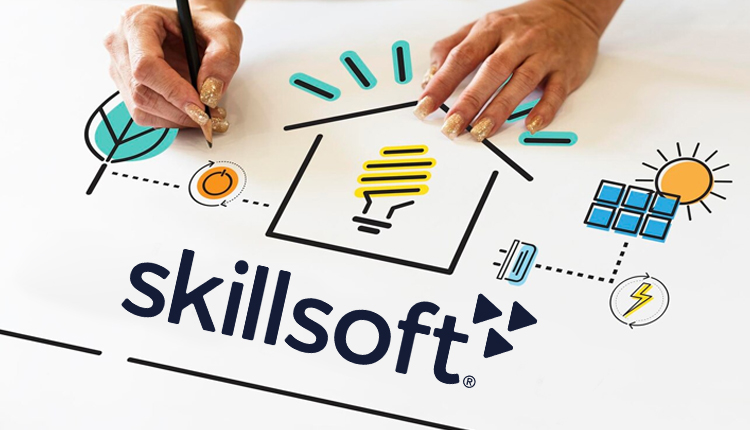Employees expect their leaders to make decisions that promote the longevity and profitability of their organization. This means doing good for both people and the planet. Sustainability is central to this expectation, safeguarding resources and ensuring a thriving, equitable future for all. However, leaders lacking green skills, such as effective deployment of resources, and leadership skills like inclusion and empathy, may miss what’s important to their talent.
This skill gap can keep decision makers from meeting employees’ expectations, leading to missed opportunities to boost engagement and retention and lost dollars in resources and efficiency. Moreover, more than 70% of global investors view strong ESG efforts as profitable, while over 60% of workers aged 18 to 43 say they’re willing to pay more for sustainable products. Hence, a sustainable business model offers a clear commercial advantage.
The key to hearing, understanding, and acting on these sustainable expectations is green skills. Green skills such as systems thinking, emotional intelligence, data analytics, and policy knowledge create successful sustainable outcomes.
Catch more HRTech Insights: HRTech Interview with Jonathan Leaf, CRO at BambooHR
Find “Square One”
Before a business can begin cultivating sustainable skills, it must assess its current standing by benchmarking skill gaps, especially ones that indicate gaps in management capabilities. A skills gap occurs when an organization lacks the capacity to meet a goal. Skills gaps become apparent when a professional or organization aims for a goal but lacks the current skills to achieve it.
Before an organization can begin to “fill the gap”, it must understand what skills it lacks and skills it may have an abundance of. Does a business have experts on sustainability policy and strategy? Is there an employee capable of managing and directing sustainability initiatives?
This initial evaluation is essential for gauging the current competence level and establishing a baseline for future development. The assessment should benchmark its skills against industry standards, competitors, and itself to identify a “square one.”
Bridge the Gap
One of the best ways to solve a skill gap is through upskilling and reskilling current employees to seal those “cracks.” According to the latest Skillsoft Corporate Social Responsibility (CSR) at Work report, 55% of respondents indicated that CSR budgets have increased for a second consecutive year, with training and education emerging as the top area of investment (41%). Searches for sustainability-related topics on Skillsoft also rose 61% between 2023 and 2024 with “sustainability” being the top searched keyword for the fourth consecutive year. There is both an audience for, and a willingness to advance, sustainability with the help of education.
By providing continuous learning opportunities for stakeholders, from early-career employees to C-suite officers, companies will build the green skills necessary to meet increasing challenges. Businesses must ensure the skills they develop today are versatile enough to meet the diverse demands of tomorrow.
Cultivate a culture of learning by taking the first step and providing educational resources like certificate courses, general knowledge builders, and mentorship programs.
Iterate and Shape
Although educating employees about the state of sustainability in 2024 is important, it’s crucial to continue their education in the future. As with the rapid rise of AI in the workplace, technologies, policies, and myriad other factors will influence a business’ capabilities. Committing to a long-term sustainability plan must include regularly refreshing and updating training content to accommodate these changes. This training shouldn’t be an accessory – leaders must ensure that education opportunities aren’t an afterthought but a part of everyday work.
As a wider sustainability plan is advanced, benchmarking current organizational knowledge and management capabilities against past performance can provide perspective on the success or failure of a project. It can also inform educational needs over the short term, as well as shape green initiatives based on how effective training and preparation was. Organizations can’t take a “set it and forget it” approach to green skilling. Instead, it must be as agile and dynamic as the needs of evolving market behaviors.
Include reassessment, refinement, and iteration into skilling plans to ensure the skills employees are learning remain aligned with broader sustainability goals.
Preparing businesses for a sustainable future requires a commitment to continuous learning and the development of green skills. By identifying and addressing skill gaps within their organizations, leaders can implement targeted educational programs to nurture the necessary expertise. This is not a one-off initiative but an ongoing process that evolves in response to changing environmental and technological landscapes. Investment in talent development, across all levels of an organization, not only helps businesses meet growing sustainability expectations, but also provides a competitive edge. By fostering a culture centered on continuous learning and sustainability, businesses are charting the path towards a resilient, equitable, and prosperous future.
Read More on Hrtech : HRTech Interview with Charlotte Dales, Co-founder and CEO at Inclusively
[To share your insights with us, please write to psen@itechseries.com ]

